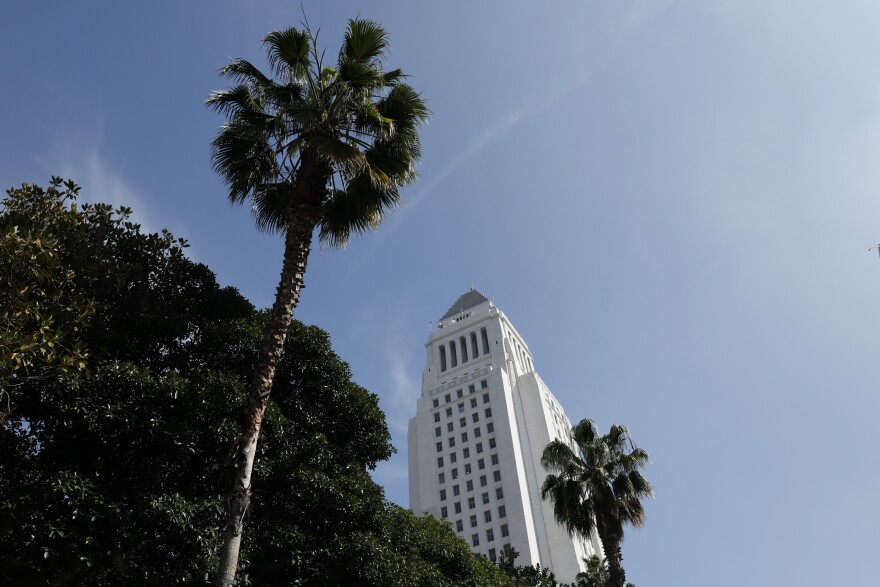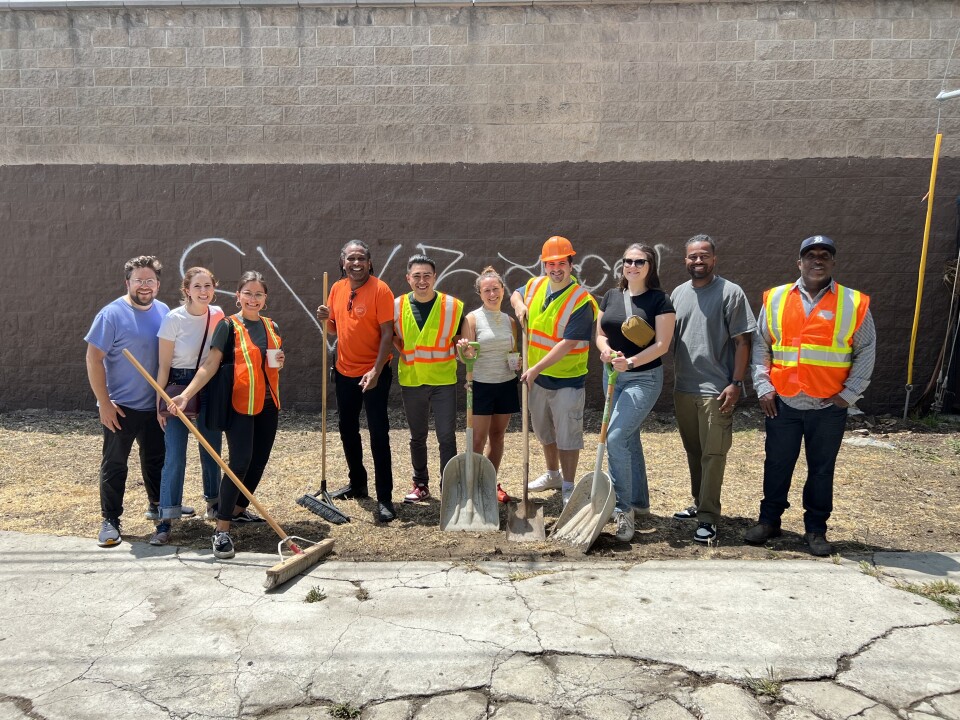Truth matters. Community matters. Your support makes both possible. LAist is one of the few places where news remains independent and free from political and corporate influence. Stand up for truth and for LAist. Make your year-end tax-deductible gift now.
Few people vote in LA neighborhood council elections. And this year, turnout hit a historic low

L.A.'s neighborhood council elections have wrapped, and the results show the lowest turnout since the city began administering the elections back in 2010.
Neighborhood councils are volunteer advisory groups that bring neighborhood-level concerns to the attention of L.A. city officials who oversee a $14 billion annual budget and represent 4 million Angelenos. This year just 7,491 ballots were cast — a 14% drop in voters from the prior elections. The elections ran on a staggered timeline from March through June.
LAist previously reported that overall turnout for neighborhood council elections, which occur every two years, has been on a continuous decline over the past decade.
The previous election cycle in 2023 saw 8,730 ballots cast. By comparison, 10 years ago, more than 26,000 ballots were cast in the 2014 neighborhood council elections.
Neighborhood councils are the most local and accessible arm of the L.A. city government, and their goal, outlined in the L.A. City Charter, is to make sure the issues and concerns of the city’s diverse neighborhoods are heard by city officials. The city of L.A. has 99 councils in total — 66 held elections administered by the city this year. The remaining councils appointed members directly because they didn’t have enough candidates to hold competitive elections or administered elections on their own (eight neighborhood councils chose this option).

What percentage of voters participated?
If you compare this year’s neighborhood council ballots against the city of L.A.’s 2.1 million registered voters, just 0.3% of voters turned out. The true percentage is likely far lower since neighborhood council elections allow an even wider pool of residents to vote than would normally be eligible for city, state and federal elections — for example, noncitizens and 16- and 17-year-olds can vote for neighborhood council representatives.
What factors played a role in this year’s elections?
This year, the L.A. City Council directed the L.A. City Clerk’s office to eliminate in-person voting and conduct the neighborhood council elections entirely by mail due to budget constraints. Unlike in state and federal elections, residents didn’t receive vote-by-mail ballots automatically even if they had voted in previous elections — all voters had to apply separately for a new ballot. Several neighborhood council members previously told LAist this year’s voting process was cumbersome and fueled the drop in turnout.
The city’s Department of Neighborhood Empowerment is in charge of supporting neighborhood councils and helping with election outreach, although it doesn’t run the elections themselves. Carmen Chang, general manager for the department, said the voting change made it hard to compare this year’s turnout to that of previous years. In 2023, for instance, elections were hybrid and voters could choose to participate in person or by mail. In 2021, the vote was conducted completely by mail, just like this year.
“Going forward, I am hopeful we can improve NC elections by continuing the hybrid model — meeting voters where they are and providing options for them to vote either in-person or by mail,” Chang said in a statement.
She also noted that turnout decreased for neighborhood councils that held their elections earlier in the year. Those that held their elections in March and early April — councils in the Westside, the Harbor areas and South L.A. — saw bigger turnout drops than other councils that held their elections later. Some neighborhood council members previously told LAist the January wildfires may have hampered some candidate recruitment and outreach efforts.
Chang said she hopes to eliminate staggered neighborhood council elections and consolidate all voting to one election day in upcoming years.
How are neighborhood councils funded?
Until this year, each council received $32,000 a year from the city to spend on day-to-day operations, election outreach, micro-grants to local groups or neighborhood events and services.
This year’s adopted city budget, which took effect on Tuesday, cuts each neighborhood council’s funding from $32,000 per year to $25,000. In total, the 99 neighborhood councils will receive $2.5 million in taxpayer funds.
The roles, responsibilities and structure of neighborhood councils are all laid out in the L.A. City Charter. Those rules could shift in the future. The city’s newly formed charter reform commission has begun holding meetings to discuss the process for revising the charter, which could include upcoming changes to the neighborhood council system. You can sign up for updates on the commission’s meetings here.








